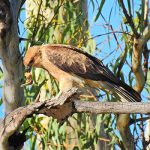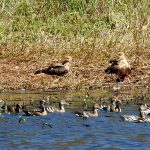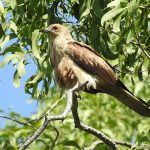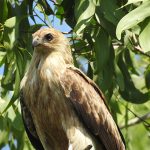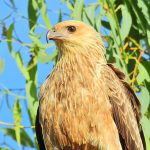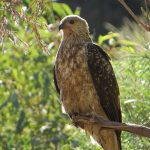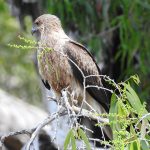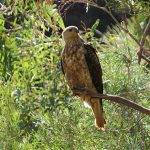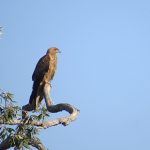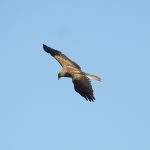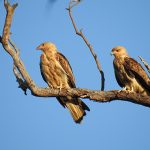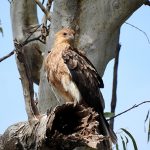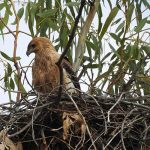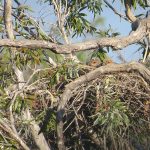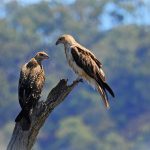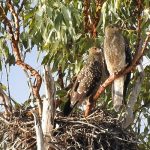WHISTLING KITE
The Whistling Kite is a medium-sized bird of prey that is native to Australia, as well as some neighboring regions in the Asia-Pacific.
The Whistling Kite is found throughout mainland Australia, including coastal regions, woodlands, grasslands, and wetlands. They are highly adaptable and can be seen in a variety of environments, from urban areas to remote wilderness.
Whistling Kites have distinctive plumage with a mix of light and dark coloring. They have a mostly pale head and underparts, with dark streaking on the chest and belly. The upperparts are brown, and the wings are relatively long and broad. One of the notable features is their whistling call, which gives them their name.
Whistling Kites are opportunistic predators and scavengers. They primarily feed on small animals such as rodents, birds, insects, and carrion (dead animals). They are known for their ability to snatch food from the ground, water, or other birds, and they have adapted well to feeding on roadkill and scraps in urban areas.
These kites often build nests in trees, generally near water sources. The nests are made from sticks and lined with softer materials. They lay two to three eggs, and both parents participate in incubating the eggs and caring for the young.
The Whistling Kite is part of the cultural and natural landscape of Australia. It is occasionally mentioned in Indigenous Australian stories and traditions, and its presence in different environments contributes to the country’s biodiversity.
Whistling Kites are often observed soaring gracefully in the sky, especially around open areas and water bodies. In some areas, they are also known to scavenge from garbage dumps and picnic areas.
The Whistling Kite is an important member of Australia’s avian community, contributing to the balance of ecosystems and playing a role in the natural food chain as both a predator and scavenger.

